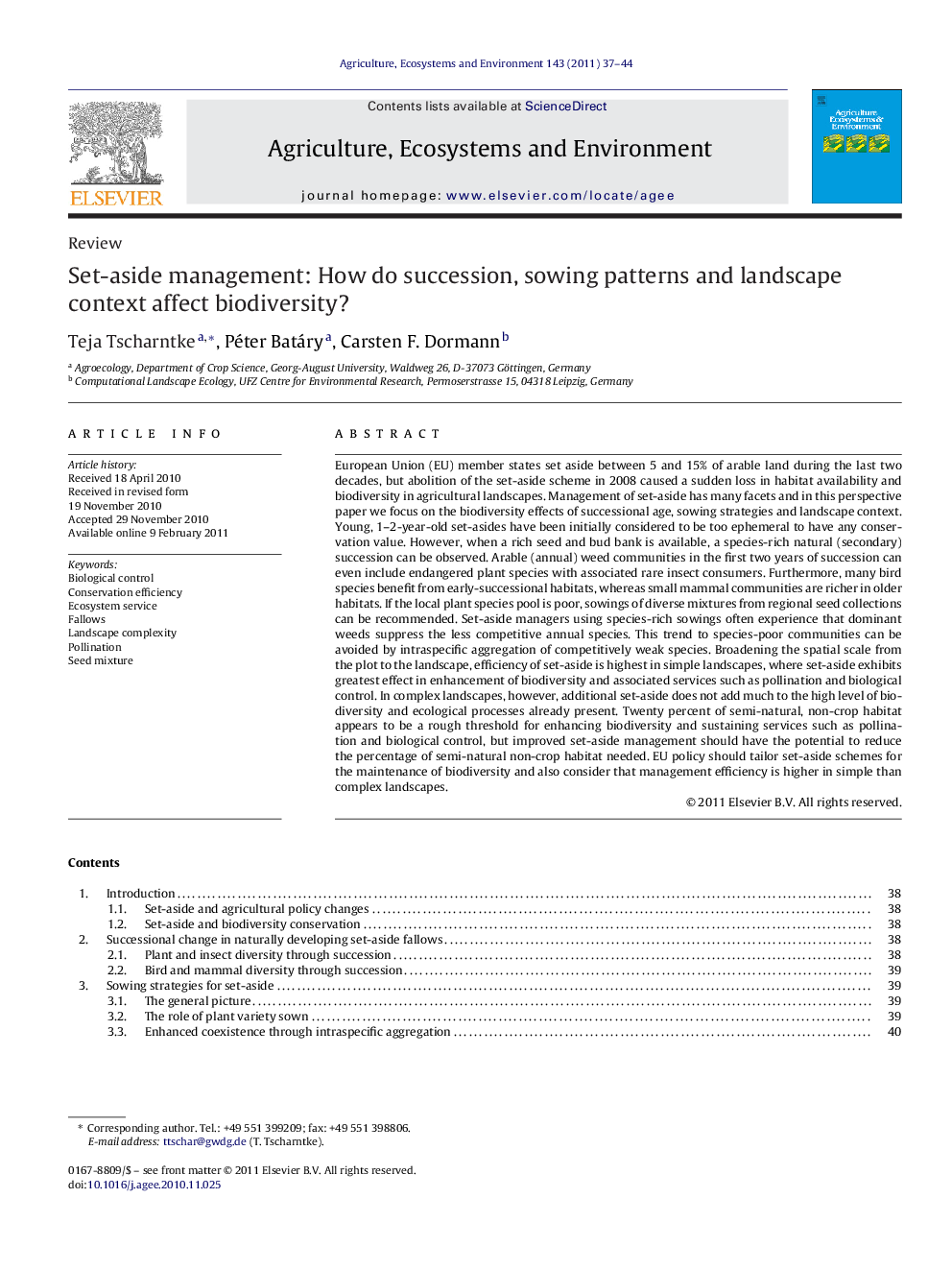| کد مقاله | کد نشریه | سال انتشار | مقاله انگلیسی | نسخه تمام متن |
|---|---|---|---|---|
| 2414814 | 1103931 | 2011 | 8 صفحه PDF | دانلود رایگان |

European Union (EU) member states set aside between 5 and 15% of arable land during the last two decades, but abolition of the set-aside scheme in 2008 caused a sudden loss in habitat availability and biodiversity in agricultural landscapes. Management of set-aside has many facets and in this perspective paper we focus on the biodiversity effects of successional age, sowing strategies and landscape context. Young, 1–2-year-old set-asides have been initially considered to be too ephemeral to have any conservation value. However, when a rich seed and bud bank is available, a species-rich natural (secondary) succession can be observed. Arable (annual) weed communities in the first two years of succession can even include endangered plant species with associated rare insect consumers. Furthermore, many bird species benefit from early-successional habitats, whereas small mammal communities are richer in older habitats. If the local plant species pool is poor, sowings of diverse mixtures from regional seed collections can be recommended. Set-aside managers using species-rich sowings often experience that dominant weeds suppress the less competitive annual species. This trend to species-poor communities can be avoided by intraspecific aggregation of competitively weak species. Broadening the spatial scale from the plot to the landscape, efficiency of set-aside is highest in simple landscapes, where set-aside exhibits greatest effect in enhancement of biodiversity and associated services such as pollination and biological control. In complex landscapes, however, additional set-aside does not add much to the high level of biodiversity and ecological processes already present. Twenty percent of semi-natural, non-crop habitat appears to be a rough threshold for enhancing biodiversity and sustaining services such as pollination and biological control, but improved set-aside management should have the potential to reduce the percentage of semi-natural non-crop habitat needed. EU policy should tailor set-aside schemes for the maintenance of biodiversity and also consider that management efficiency is higher in simple than complex landscapes.
Research highlights
► Early-successional set aside can benefit rare arable weeds, associated insects and birds, but not mammals.
► Sowing of intraspecifically aggregated wild plants benefits competitively weak species and enhances biodiversity value of set-aside.
► Efficiency of set aside in terms of biodiversity and associated services is highest in structurally simple landscapes.
► Twenty percent of semi-natural habitat appears to be a rough threshold for sustaining biodiversity and services such as biological control and pollination.
► Improved set aside management should have the potential to reduce the percentage of semi-natural needed.
Journal: Agriculture, Ecosystems & Environment - Volume 143, Issue 1, September 2011, Pages 37–44